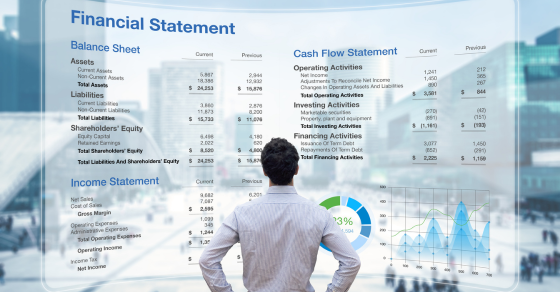
With lease accounting standards ASC 842 and IFRS 16 in place for several years, private businesses have navigated a significant shift in how lease obligations are reported on the balance sheet. Now is an opportune moment to assess the practical impacts of these changes on companies and explore the latest updates to these standards.
Previously, operating leases were conveniently tucked away in the footnotes of financial statements. They take center stage on the balance sheet as both a right-of-use asset and a lease liability. This accounting makeover affects a company’s debt-to-equity ratio, working capital, and financial health. Suddenly, businesses have seen their liabilities swell, presenting a new challenge to stakeholders interpreting balance sheet health.
Upon implementation, private companies had to start recognizing nearly all leases on the balance sheet, recording them as right-of-use assets with a corresponding liability. For many, this was a departure from past practices, necessitating a meticulous review of contracts and commitments that had been, until then, off the books.
The lease liability reflects the present value of future lease payments, significantly affecting reported debt levels. Concurrently, the right-of-use asset has to be depreciated over the lease term, impacting the balance sheet and the income statement. The net result? Increased assets and liabilities can skew financial ratios and potentially trip debt covenants.
The most immediate challenge was the data-intensive requirements of the new standards. Companies needed to gather extensive details on every lease, a process often marred by decentralized data and varying documentation quality. Accounting complexity skyrocketed, especially in recognizing and measuring lease components and understanding the impact on financial covenants.
Yet, there are opportunities amidst these challenges. The enhanced transparency can improve stakeholder trust and provide a clearer picture of long-term financial commitments. It also allows for more strategic decision-making regarding leasing versus buying and can even catalyze renegotiating terms with lessors.
Accounting bodies have responded to the feedback from the business community with amendments aimed at simplifying certain aspects of lease accounting. For example, recent updates offer practical expedients on the reassessment of lease terms, providing relief for businesses grappling with the administrative burden of the standards.
Additionally, the standard-setters have addressed the intricacies of lease modifications, especially pertinent in the evolving business landscape shaped by the global pandemic. These amendments aim to reduce complexity and facilitate a smoother adaptation to the new lease accounting reality.
The balance sheet is now more than a historical document; it’s a strategic tool, and lease accounting plays a significant role. Companies must consider the balance sheet implications in their business strategies, particularly concerning credit availability and asset management.
The elevated importance of lease accounting in financial reporting and the enhanced balance sheet transparency calls for businesses to maintain a sharper focus on lease management. It emphasizes the need for integrated systems that can handle the recording, tracking, and reporting of lease elements efficiently and accurately.
Lease accounting under ASC 842 and IFRS 16 presents a new frontier in financial reporting. The impact on balance sheets has been profound, with significant implications for business strategy and financial planning. As the landscape evolves with recent updates, businesses must proactively dialogue with financial advisors or CPAs. Professional guidance is crucial in navigating these complexities, ensuring compliance, and optimizing strategic decisions to leverage these accounting changes effectively.
Receive Free financial tips & Tax Alerts!
"*" indicates required fields
Businesses usually want to delay recognition of taxable income into future years and accelerate deductions into the current year. But when is it wise to do the opposite? And why…
Navigating the realm of capital gains and optimizing tax outcomes require strategic thinking and informed decision-making. Understanding and employing effective capital gains tax strategies is crucial for businesses contemplating asset…
If your business doesn’t already have a retirement plan, it might be a good time to take the plunge. Current retirement plan rules allow for significant tax-deductible contributions. For example,…